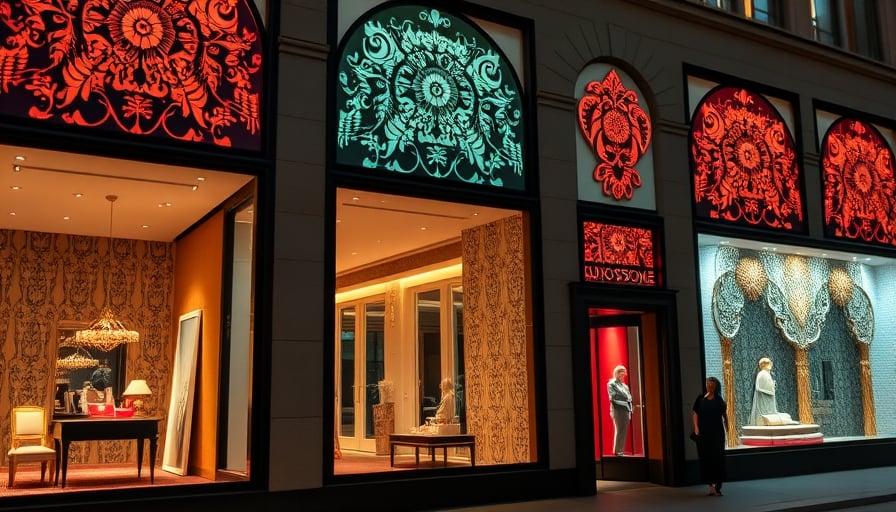Corporate Analysis: LVMH’s Resurgence Amid Shifting Luxury Dynamics
Executive Summary
LVMH Moët Hennessy Louis Vuitton SE has recorded a pronounced share price rally, reflecting a broader industry optimism following the group’s return to profitability. Despite lingering concerns about creative fatigue and price‑value misalignment, analysts are revising upside expectations, positioning the luxury sector on a trajectory of renewed growth. This article explores how LVMH’s performance aligns with emerging lifestyle trends, demographic realignments, and cultural movements—offering a blueprint for consumer‑centric business opportunities at the nexus of digital transformation and physical retail.
Market Context
- Share Price Momentum: LVMH’s stock surged, contributing to a market‑cap increase that lifted Chairman Bernard Arnault’s personal wealth by roughly $19 billion in a single day.
- Industry Sentiment: Analysts have lifted price targets, citing the company’s diversified portfolio—spanning wines, cognacs, fragrances, cosmetics, luggage, and apparel—as a hedge against sector volatility.
- Challenges Identified: Critics flag a perceived lack of innovation and a diminishing price‑value perception, especially among younger consumers who prioritize experiential over material value.
Demographic and Cultural Shifts
| Segment | Trend | Business Opportunity |
|---|---|---|
| Gen Z & Millennials | Demand for authenticity, sustainability, and immersive brand storytelling | Investment in AR/VR try‑on experiences, transparent supply chains, and socially responsible product lines |
| Emerging Middle‑Class in Asia | Rapid urbanization and rising disposable income | Expansion of flagship stores in tier‑two cities, localized e‑commerce platforms, and micro‑influencer collaborations |
| Health‑Conscious Consumers | Preference for wellness‑oriented luxury (e.g., anti‑aging cosmetics, functional apparel) | Development of wellness suites within boutiques, cross‑industry partnerships with tech health firms |
| Digital Native Shoppers | Seamless omni‑channel journeys, data‑driven personalization | Deployment of AI‑powered recommendation engines, subscription models for exclusive product drops |
LVMH’s portfolio is uniquely positioned to tap into these demographics. Its heritage brands lend credibility to heritage‑centric marketing, while newer, trend‑driven labels such as Celine and Fenty offer agility in responding to fast‑moving cultural currents.
Digital Transformation vs. Physical Retail
The Hybrid Imperative
The luxury sector has historically leaned on the tactile allure of physical stores. However, the pandemic accelerated the integration of digital touchpoints, making the customer journey increasingly omnichannel:
- Digital Showrooms: Virtual tours of flagship stores allow consumers to experience spatial storytelling before visiting in person.
- Social Commerce: Instagram Shop, TikTok Live, and other platforms enable instant purchase pathways, directly linking content to conversion.
- Data‑Driven Personalization: CRM systems now feed real‑time insights into in‑store staff, ensuring bespoke service that marries digital recommendations with human interaction.
LVMH has leveraged these strategies, notably through its “Maison” concept stores that combine curated in‑store experiences with digital kiosks. This hybrid model preserves the sensory value of luxury while capitalizing on digital efficiencies.
Investment Priorities
- Augmented Reality Try‑Ons: Enhancing virtual fitting rooms for fashion and cosmetics.
- Blockchain for Provenance: Transparent tracking of luxury goods, appealing to ethically minded buyers.
- AI‑Enhanced Inventory: Predictive analytics to reduce overstock and meet real‑time demand shifts.
Forward‑Looking Analysis
Sustainability as Differentiator
- Consumers increasingly equate luxury with responsibility. LVMH’s “LIFE” (LVMH Initiatives for French Excellence) program can be scaled globally, offering a competitive edge.
Experiential Retail
- Physical stores should evolve into experience hubs—think pop‑up ateliers, in‑store events, and immersive storytelling.
Global Supply‑Chain Resilience
- Diversifying sourcing and incorporating local artisans can mitigate geopolitical risks while reinforcing brand heritage.
Data Monetization
- Aggregated consumer insights can inform product development, pricing strategies, and targeted marketing, fostering a virtuous cycle of revenue growth.
Cross‑Industry Collaborations
- Partnerships with tech firms (for AR, AI), wellness brands, or sustainability NGOs can unlock new value propositions and broaden customer bases.
Conclusion
LVMH’s recent market performance illustrates the resilience of luxury when it aligns with evolving consumer preferences and leverages the synergies between digital innovation and physical retail. By embracing sustainability, experiential storytelling, and data‑driven personalization, the group—and other players in the consumer sector—can capitalize on emerging demographic shifts and cultural movements. The sector’s trajectory suggests that, despite short‑term challenges, luxury will continue to thrive as a premium, experience‑centric offering that adapts fluidly to the digital age.
